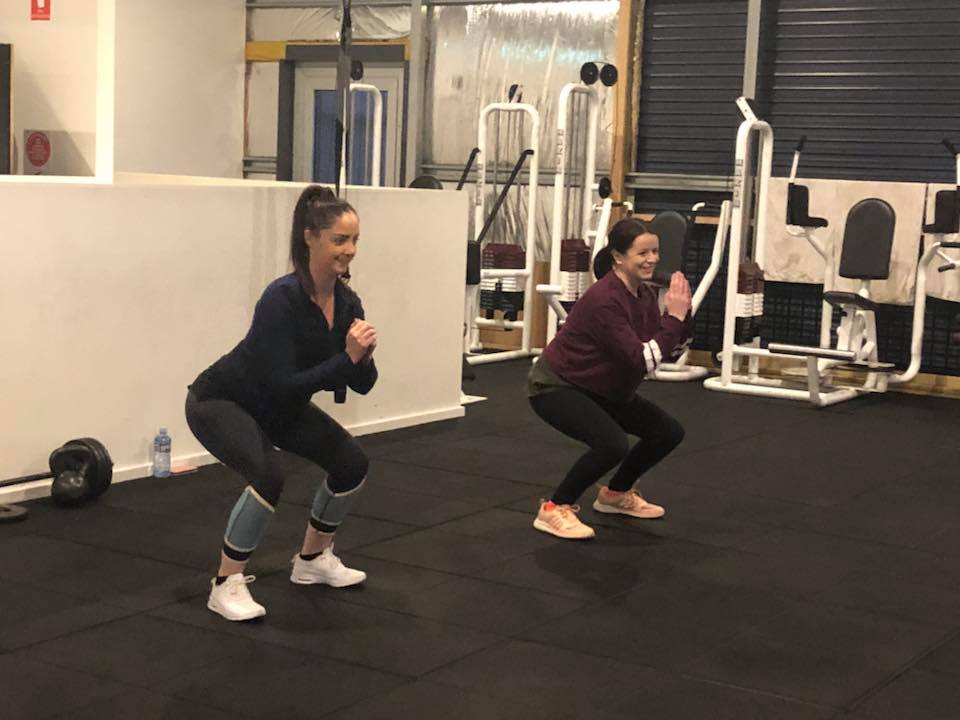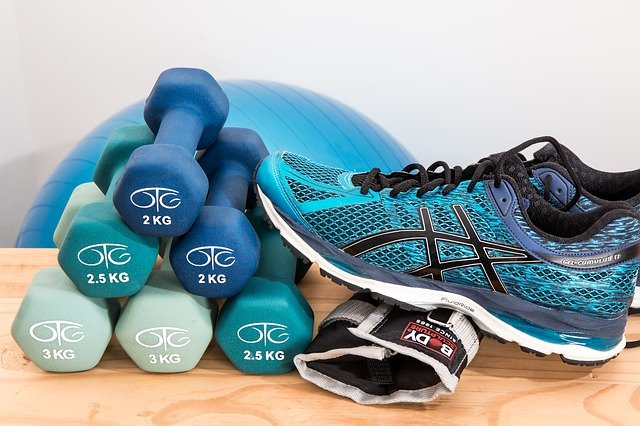
Many people are unaware of how to prevent injuries during exercise when they start a new workout routine. There are many methods to avoid injury and lower the risk of injury while exercising. Warming up before you begin any workout is very important, as this will ensure your muscles and surrounding tissue are receiving the right amount of blood and nutrients. Warming up before you start a workout can increase the likelihood of muscle strain and even injury. A good warm up routine involves light cardio to help get circulation going.
Strengthening your muscles and stretching is important for preventing injury during exercise. High impact plantations are best avoided because they can strain your feet. Choose exercises that are low or non-impact to reduce the risk. This will reduce the likelihood of you getting injured while working out. There are ways you can reduce injury from exercise if it does happen.

Warm muscles are essential before you start any exercise program. It is more likely that cold muscles will cause tears than warm. Before you begin an exercise program, it is essential to stretch. During this time, you should perform dynamic stretching. If you have any questions about stretching, ask a trained professional or consult your doctor. Don't assume that you know everything if you haven't done it before.
You shouldn't hold your breathe during exercise. It is important to inhale during the exertion stage and to breathe in during recovery. Your weight should be controlled at all times. Never throw or use momentum in order to swing a pound. Maintain good form while working out to prevent an injury. You are at risk of sustaining a stress injury if your neck or back isn’t flexible enough. It's important to lift weights within your strength limits.
Proper technique is essential during a workout. For example, if you're new to weight training, you may only lift a few kilograms at first, but it's important to gradually increase the weight. It is important to use the right equipment in order to avoid injury while exercising. For the best results, make sure to consult a physical therapist before beginning any exercise regimen. A physical therapist is qualified to advise you on how to best recover from injuries and recommend appropriate exercises.

You can also avoid injury by changing up your exercises. You can increase your muscle mass by doing different types. It's possible to build more muscle by changing your workout routines. You might consider joining a gym that allows you to change your workouts every day if you are having trouble starting a new sport. Running shoes can be tried in the weightroom.
FAQ
What are 10 healthy lifestyle habits?
-
Breakfast is a must every day.
-
Don't skip meals.
-
Be balanced.
-
Get lots of water.
-
Take care your body.
-
Get enough sleep.
-
Avoid junk food.
-
Do some form of exercise daily.
-
Have fun!
-
Meet new people.
What can I do to lower my blood pressure?
Find out the causes of high blood pressure first. Next, take steps that will reduce the risk. This could be as simple as eating less salt, losing weight, taking medications, etc.
It is important to ensure that you get enough exercise. Walking is a great alternative if you don't have the time or energy to exercise regularly.
You should join a gym if you are unhappy with your exercise routine. You will probably join a gym where you can meet other people with similar goals. You will find it easier to keep to a workout schedule if you have someone to watch you at the gym.
What's the difference between a virus & a bacterium?
A virus is a microscopic organism that cannot reproduce outside its host cell. A bacterium (or single-celled organism) reproduces by splitting itself into two. Viruses have a very small size (about 20 nanometers), while bacteria is larger (up to one micron).
Viruses are often spread through contact of infected bodily fluids like saliva, urine or semen. Bacteria can be spread by direct contact with infected objects and surfaces.
Viruses may enter the body through cuts, scrapes. bites, or any other break in the skin. They can also penetrate the skin through the eyes, nose or mouth.
Bacteria can enter the body through wounds. They can also enter our bodies from food, water, soil, dust, and animals.
Both viruses and bacteria can cause illness. Viruses can not multiply within the host. So they only cause illnesses when they infect living cells.
Bacteria can cause illness by multiplying in the body. They can invade other areas of the body. That's why we need antibiotics to kill them.
Exercise: Good for immunity or not?
Your immune system is strengthened by exercise. Your body makes white blood cells that fight infections when you exercise. Your body also removes toxins. Exercise is a great way to prevent heart disease, cancer, and other diseases. Exercise can help reduce stress.
Exercising too often can cause your immune system to be weaker. You can cause muscle soreness by working out too hard. This can cause inflammation as well as swelling. The body then needs to make more antibodies to fight infection. The problem is that these extra antibodies can cause allergies and autoimmune disorders.
So, don't overdo it!
How does weight change with age?
How can you find out if your weight has changed?
A person who has less body fat than their muscle mass will experience weight loss. This means that calories must be consumed at a rate greater than energy. Low activity levels are the most common cause for weight loss. Other causes include illness, stress, pregnancy, hormonal imbalances, certain medications, and poor eating habits. When there is more fat than muscles, it's called weight gain. It occurs when people consume more calories per day than they need. Common reasons include overeating, increased physical activity, and hormonal changes.
The main reason why our bodies lose weight is because we consume fewer calories than we burn. The main reason we lose weight is because we exercise more often. This increases our metabolism rate and burns more calories each day. However, this doesn't mean that we'll necessarily get thinner; what matters is whether or not we're losing fat or gaining muscle. Weight loss is possible if you burn more calories than you consume. But, if we consume far more calories than what we burn, then we actually store them as fat.
As we age, our ability to move around is slower and we are less mobile. We also tend not to eat as much food as we used to when we were younger. Also, we are more likely to gain weight. On the other hand, we have more muscle mass and look larger than we actually are.
If you don't weigh yourself every week, it's impossible to determine how much weight has been lost. There are many ways to determine your weight. You can gauge your waist size, hips, hips, thighs and arms. Some people prefer to use bathroom scales while others like to use tape measures.
Track your progress by measuring your waistline and weighing yourself every week. You can also take pictures of yourself every few months to see how far you've come.
You can also find out how much you weigh by looking up your height and weight online. For example, if you're 5'10" tall and weigh 180 pounds, you'd probably weigh 180 pounds.
What are the 10 best foods to eat?
These are 10 of the best foods to eat.
-
Avocados
-
Berries
-
Broccoli
-
Cauliflower
-
Eggs
-
Fish
-
Grains
-
Nuts
-
Oats
-
Salmon
What is the best diet for me?
Your age, gender, body type, and lifestyle choices will all impact the best diet. It is also important to think about how much energy you use during exercise and whether you like low-calorie foods.
If you are trying to lose weight, then you may want to try intermittent fasting. Intermittent Fasting means that you eat only specific meals throughout your day and not three large meals. This approach may prove to be more beneficial than traditional diets that have daily calorie counts.
Research suggests that intermittent fasting may increase insulin sensitivity and lower inflammation. This can result in a reduction in blood sugar levels and a reduced risk of developing diabetes. Intermittent fasting has been shown to promote fat loss as well as improve overall body composition.
Statistics
- nutrients.[17]X Research sourceWhole grains to try include: 100% whole wheat pasta and bread, brown rice, whole grain oats, farro, millet, quinoa, and barley. (wikihow.com)
- Extra virgin olive oil may benefit heart health, as people who consume it have a lower risk for dying from heart attacks and strokes according to some evidence (57Trusted Source (healthline.com)
- According to the Physical Activity Guidelines for Americans, we should strive for at least 150 minutes of moderate intensity activity each week (54Trusted Source Smoking, harmful use of drugs, and alcohol abuse can all seriously negatively affect your health. (healthline.com)
- In both adults and children, the intake of free sugars should be reduced to less than 10% of total energy intake. (who.int)
External Links
How To
What does "vitamin" actually mean?
Vitamins are organic compounds naturally found in food. Vitamins help us absorb nutrients from foods we eat. The body cannot make vitamins; therefore, they must be obtained from food.
There are two types vitamins: water soluble or fat soluble. Water-soluble vitamins dissolve easily when they are dissolved in water. Examples include vitamin C,B1 (thiamine), B2 (riboflavin), B3 (niacin), B6 (pyridoxine), folic acid, biotin, pantothenic acid, and choline. Fat-soluble vitamins are stored in the liver, fatty tissue and kidneys. Vitamin D, E, K and A are some examples.
Vitamins are classified according to their biological activity. There are eight major vitamin groups:
-
A – Essential for normal growth, and the maintenance of good health.
-
C - essential for nerve function and energy generation.
-
D - Vital for healthy bones and teeth
-
E - Required for good vision & reproduction
-
K - required for healthy muscles and nerves.
-
P - Vital for strong bones and teeth.
-
Q - aids digestion and absorption of iron.
-
R - Required for red blood cell production
The recommended daily allowance (RDA) of vitamins varies depending on age, gender, and physical condition. The U.S. Food and Drug Administration sets RDA values.
For adults over 19, the RDA for vitaminA is 400 micrograms per daily. However, pregnant women need 600 micrograms per day because it is important for fetal development. Children ages 1-8 require 900 micrograms per day. For infants younger than one year, 700 micrograms are required daily. However, this number drops to 500 micrograms each day for children aged 9-12 months.
Children ages 1-18years who are obese need 800 micrograms per day while those who are overweight need 1000 micrograms per day and children who are underweight need 1200 micrograms per day to meet their nutritional needs.
Children 4-8 years old who have anemia must consume 2200 micrograms of Vitamin C daily.
2000 micrograms is the minimum daily intake for adults over 50 years old to maintain good health. Mothers who are pregnant, nursing, or have a high nutrient need will require 3000 micrograms a day.
1500 micrograms is the recommended daily intake for adults aged 70+, who lose approximately 10% of muscle each year.
Women who are pregnant or nursing need more than the RDA. Pregnant woman need 4000 micrograms daily in pregnancy, and 2500 per day after childbirth. Breastfeeding mothers need 5000 mg per day when breastmilk is being produced.